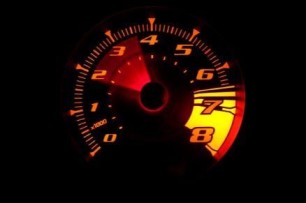Blog Details - Magma HDI

Complete guide on rev matching on bikes 4th August 2022
In India, the majority of motorcycles lack a slipper clutch. While learning motorcycle, many people find it challenging to downshift correctly. The engine comes under stress because they typically downshift while holding the clutch, which results in the higher gear accelerating harder than the lower gear at the same speed. To match that speed on the lower gear for a seamless transfer, one should preferably rev a bit higher before downshifting. Otherwise, you would be "engine-braking," which is not an intelligent way to slow down.
The correct way of downshifting is to blip the throttle between shifts to match the revs to the speed. This is also known as revving. In this post, we are talking all about it. So, without further due, let's get into it.
How to rev-match correctly?
● As you press the brakes, hold the clutch and downshift as you start to slow down (do not release the clutch yet).
● Now, "blip" the throttle while maintaining clutch pressure to increase engine RPM gently.
● As soon as the engine starts to rev, let go of the clutch instantly.
● Don’t forget to keep carefully applying the brakes. When you downshift, the aim is to match the revs needed for the bike to move at that precise pace.
● If your bike jerks and slows down unexpectedly, it means that the engine's RPM wasn't high enough. Try to rev it up further the next time you try it.
● The last step would be to practice and practice. Getting it right the first time is not necessary. Don't give up. You will learn how to downshift with time.
The importance of rev-matching.
Now that you know what occurs when your motorbike is rev-matched, let's talk about its significance. Downshifting without rev-matching may cause a significant shock in the motor while travelling at high speeds, especially on large bikes with high horsepower output. The result will be a back wheel that hops, skips, and steps out of alignment. In a scenario like this, controlling the motorcycle at high speeds requires excellent control and precision. The shock won't be as extreme or dramatic on motorcycles with less power, but it still has the potential to cause an accident.
Matching your RPM reduces engine wear and tear, yet another crucial justification for rev-matching. The shock that results from improper rev matching puts more strain on the engine and gearbox, among other parts.
Does rev matching consume more fuel?
The forceful use of the accelerator does cause it to use somewhat more fuel, but only little than usual.
If done properly, rev-matching can assist you in downshifting efficiently and reduce stress on your engine and clutch. It's a tactic that bikers employ frequently. It's crucial to keep in mind that you don't have to match your revs perfectly at first when you're practicing. To master, like with any other ability, rev-matching needs considerable practice. You will eventually be able to tell when your engine and road speed are in sync.
Take your first step towards rev-matching today, and don't forget to be safe. Riding on roads is always an invitation to mishaps that may be a potential threat to you and your bike. Always stay alert while riding, wear a protective gear helmet, and avoid overspeeding. Do not forget to invest in the best bike insurance for an additional safety net over your bike. Buy bike insurance online today and gift yourself with benefits that will eliminate the financial stress off you during panic situations.
Click HERE to buy bike insurance online and get rewarded with effective benefits.
Disclaimer: The information provided above is for illustrative purposes only. To get more details, please refer to policy wordings and prospectus before purchasing a policy.

